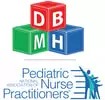Tay-Sachs
Tay-Sachs is an autosomal recessive neurodegenerative disorder. It is thought that mutations in the HEXA gene cause it. Mutations of the HEXA genes lead to disrupting other enzymes from breaking down a fatty substance in the lysosomes of cells called GM2 ganglioside. GM2 ganglioside ultimately builds up to toxic levels throughout the body, especially in neurons of the brain and spinal cord. The neurons are destroyed, leading to the degenerative nature of Tay-Sachs disease. The most common form of Tay-Sachs is typically most evident in infancy. This form becomes more obvious around ages 3-6 months when development begins to slow. Although infantile Tay-Sachs Disease is most common, there are other forms of Tay-Sachs. Juvenile Tay-Sachs, or subacute Tay-Sachs, is when children develop symptoms later than those in the infantile age group, and these patients typically live until late childhood or early adolescence. The adult form is called late-onset Tay-Sachs, and can occur anytime from adolescence to mid-30s. These forms of Tay-Sachs have varying degrees of severity with regards to symptoms, but typically symptoms are milder than infantile Tay-Sachs disease. These forms are also much more rare when compared to infantile Tay-Sachs.
Tay-Sachs is also known as:
Tay-Sachs is also known as:
- B Variant GM2-Gangliosidosis
- GM2 Gangliosidosis, Type 1
- Hexosaminidase Alpha-Subunit Deficiency (Variant B)
- Hexosaminidase A deficiency
- HEXA deficiency
- Sphingolipidosis, Tay-Sachs
- TSD
Assessment & Screening
- Enzyme Screening: Enzyme assay detects the level of hexosaminidase A protein produced in the blood from the HEXA gene. Individuals with infantile onset Tay-Sachs are expected to have absent or nearly absent hexosaminidase A enzyme activity, while those with juvenile or adult onset Tay-Sachs tend to have 6-15% hexosaminidase A enzyme activity.
- Carrier Screening: Reading across both copies of an individual's HEXA genes and detecting if there are any known mutations. A negative (normal) result significantly reduces the chance of being a carrier, but does not eliminate the chance. Carrier screening is typically performed where there is no known history of the disease in either parents' family.
- Mutation Analysis: Typically performed when there is a known family history, or when there is a positive screening result. This analysis can further identify the selected genes and give a clearer picture as to the exact mutation.
Position Papers & Practice Parameters
- American College of Obstetrics & Gynecology Committee Opinion on Carrier Screening for Genetic Conditions (2017) (includes recommendations on Tay-Sachs screening)
Articles
- New Approaches to Tay-Sachs Disease Therapy (Solovyeva, et al, 2018)
Resources
For Healthcare Professionals:
- Genetic and Rare Diseases Information Center Tay-Sachs page
- National Organization for Rare Diseases (NORD) Tay-Sachs page
Organizations
For Patients/Caregivers:
- National Tay-Sachs & Allied Diseases Association (NTSAD)
*Tay-Sachs content originally curated by Caroline Taylor, BSN, RN, CCRN and Elizabeth Vaughan, BSN, RN, CPN.
